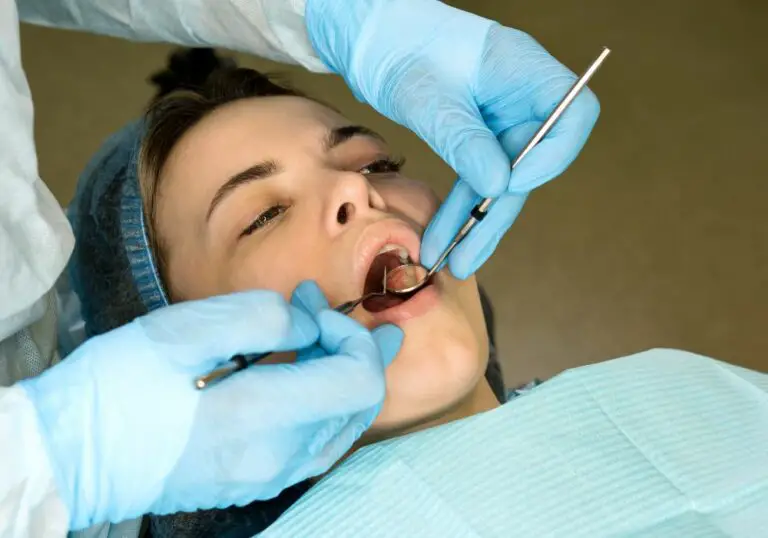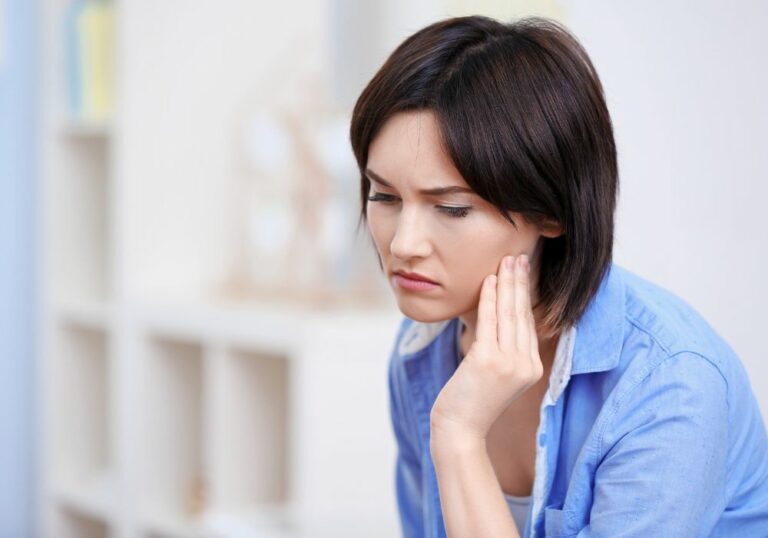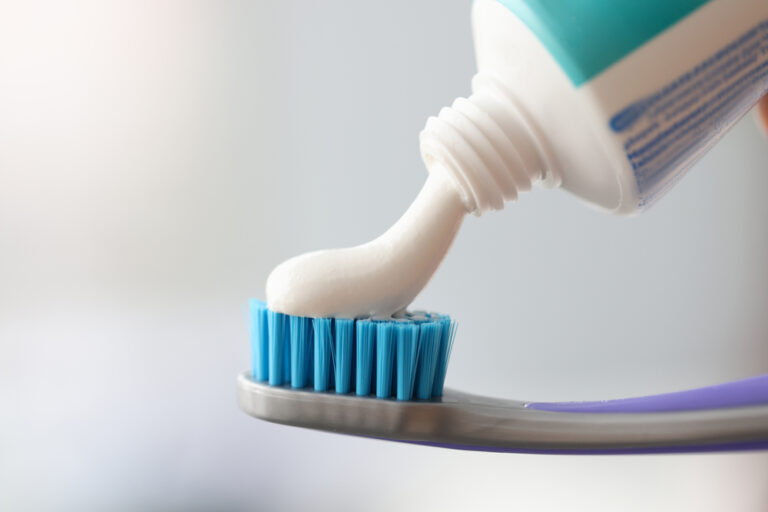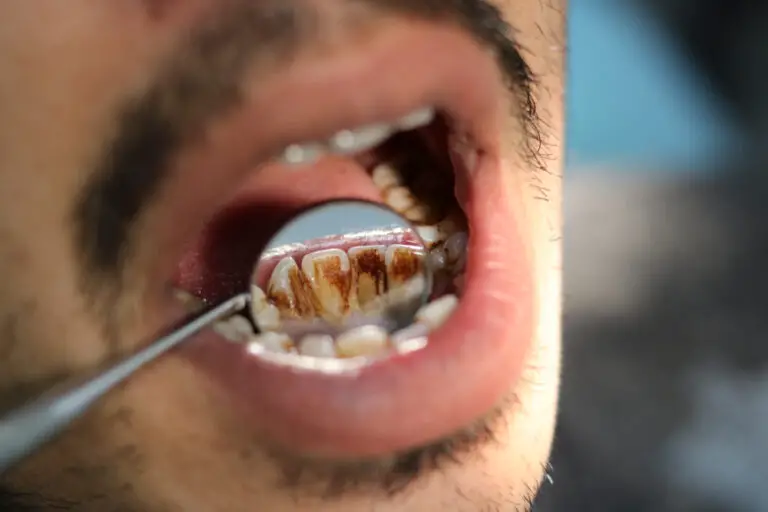It is not uncommon for someone to experience an earache and tooth pain concurrently. At first glance, these symptoms may seem completely unrelated. However, the ear and teeth share key anatomical and neurological connections that can result in pain signals referring to one another. Determining the underlying cause of simultaneous ear discomfort and dental pain is crucial for proper diagnosis and treatment.
Nerve supply of the ear and teeth

The reason an earache and toothache can happen together arises from the common sensory nerves supplying these regions:
- Trigeminal nerve – The trigeminal nerve is the main sensory nerve of the face. It has three main branches, the ophthalmic (V1), maxillary (V2) and mandibular (V3) nerves. The mandibular branch carries sensory fibers from the lower teeth.
- Glossopharyngeal nerve – This important cranial nerve innervates the ears, tongue, throat and upper teeth. Irritation of the glossopharyngeal nerve can be felt in any of these areas.
- Nerve crossover – The trigeminal and glossopharyngeal nerves communicate via connecting fibers in an area of the brainstem called the trigeminal nucleus. This allows pain signals to cross over and be felt in different branches.
So in summary, the maxillary and mandibular branches of the trigeminal nerve supply the upper and lower teeth. The glossopharyngeal nerve supplies the ear structures. Crossover between these nerves means irritation in the teeth, ears or throat can be felt in another location, leading to referred pain.
Why pain crosses over between the ear and teeth
There are a few key reasons why pain signals can get crossed between the trigeminal and glossopharyngeal nerves:
- Shared nucleus – The trigeminal system has strong connections to cranial nerves controlling the ear, throat and tongue. Their nerve fibers crossover in the trigeminal nucleus region.
- Inflammation – Swelling and inflammation from an ear or dental infection puts pressure on surrounding nerves, including branches controlling other areas. This leads to a spread of pain signals.
- Nerve impingement – If nerves are compressed due to trauma, tumors or other lesions, it can affect signaling from different branches. Ear and tooth pain may result.
- Neuralgias – Disorders causing nerve irritation without a specific injury can lead to episodes of shooting facial pain spreading to the ear and teeth. An example is trigeminal neuralgia.
So in an otherwise healthy individual, the main reason for crossover ear and dental pain is inflammation or infection irritating linked sensory nerves that supply these regions. But other nerve issues can allow pain signals to radiate as well.
Structural and functional links between the ear and teeth
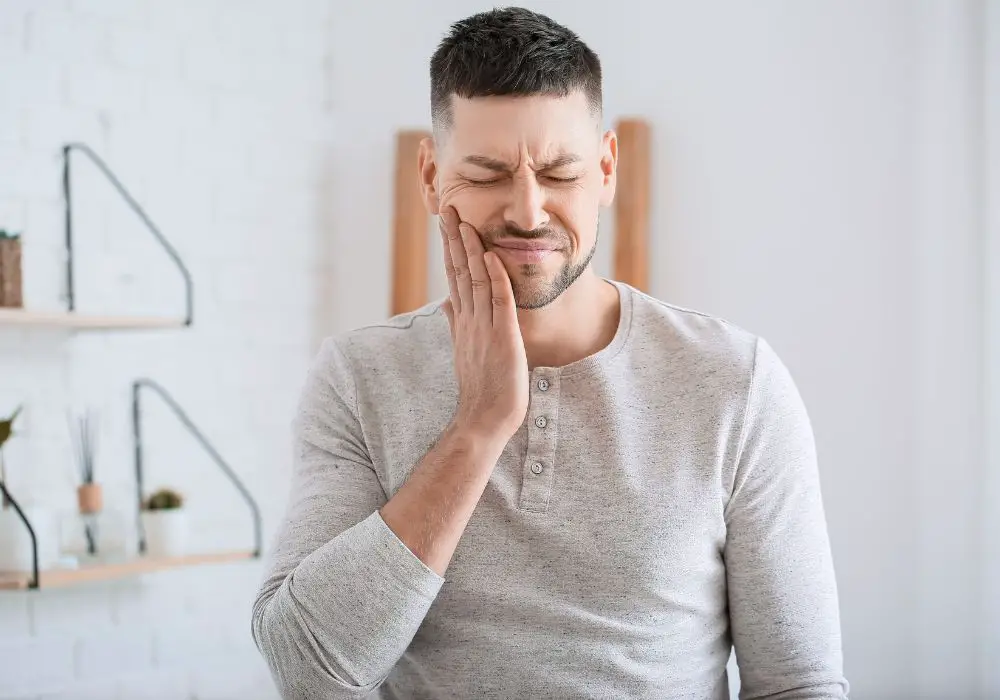
On top of the shared nerve supply, the ear and teeth are also closely connected structurally and functionally:
- Proximity – The ears are located immediately adjacent to the posterior teeth, or molars and premolars. Problems in either area can directly impact the other.
- Saliva glands – The parotid saliva glands responsible for saliva production are near the ear canal and upper back teeth. Issues with these glands can cause pain in both regions.
- Temporomandibular joint – The TMJ hinge connects the jawbone to the base of the skull very close to the ear. Jaw disorders often lead to ear pain.
- Infection spread – Due to proximity, infections can directly spread from an ear or tooth source through nearby tissues to irritate one another.
- Referred pain – Immediate structural connections mean inflammation transmits directly between ear and dental structures, felt as referred pain.
- Muscle spasms – Severe trismus spasms from a dental infection can pull on muscles attaching near the ear, causing ear discomfort.
So the ears and teeth are linked both through neurological crossover and direct anatomical connections, explaining why pain from one area commonly refers to the other.
Primary ear conditions causing tooth pain
Pain originating from the ear that radiates to or is felt in the teeth often arises from the following ear infections or conditions:
Otitis media
An infection or inflammation of the middle ear structures behind the eardrum is called otitis media. It leads to a buildup of pressure and fluid in the middle ear that stretches and inflames the ear drum. This irritation spreads through connecting nerves to be felt as tooth pain. Otitis media may arise due to a cold, allergies, smoking or other upper respiratory issues. Severe, persistent earache with tooth pain requires medical treatment.
Otitis externa
This outer ear canal infection, often called swimmer’s ear, involves painful inflammation and swelling of the thin skin lining the ear opening and canal. As the outer canal swells shut, it puts pressure on the eardrum, nearby nerves and TMJ which can refer pain to the teeth. It is caused by moisture, trauma and infections.
Mastoiditis
The mastoid process of the temporal bone which sits just behind the ear can become infected with bacteria that have spread from otitis media through the air cells. The swollen, inflamed mastoid puts pressure on the surrounding nerves related to the ears and upper back teeth, leading to referred pain. It requires intravenous antibiotics and surgery may be necessary to drain the mastoid bone if antibiotics are ineffective.
Eustachian tube dysfunction
The Eustachian tube connects the middle ear to the nasopharynx and helps equalize ear pressure. When blocked or swollen, negative pressure and fluid buildup in the middle ear can cause a dull earache with radiating tooth pain. This referred pain is from the middle ear pressing on adjacent nerve structures.
TMJ disorders
Temporomandibular joint dysfunctions where the jaw joint is inflamed, injured or arthritic can impinge directly on the ear canal. TMJ pain often radiates up from the joint into the ear and teeth. Grinding, malocclusion, jaw injury or whiplash may precipitate TMJ disorders.
Primary dental causes of ear pain

In other instances, the primary origin is odontogenic where a dental issue refers pain that is perceived in the ear:
Dental caries
Tooth decay reaching the inner pulp causes inflammation and infection of the nerve. The trigeminal branches relaying signals from decayed teeth crossover at the trigeminal nucleus to also cause ear pain. Untreated dental caries eventually progresses to pulp necrosis and abscess requiring a root canal or extraction.
Periapical abscess
A pocket of pus forming at a tooth’s root tip is called a periapical abscess. The pressure and inflammation causes severe throbbing pain. As it spreads through the mandibular bone and soft tissue, swelling irritates the branches of the trigeminal nerve connected to the ears resulting in referred ear pain. Abscesses require root canals or tooth removal.
Impacted or partially erupted wisdom teeth
Partially impacted or erupted wisdom teeth allow for food, bacteria and debris buildup around the gums which becomes inflamed and infected. This puts pressure on the lining of the maxillary sinuses above the upper teeth as well as irritating nerves related to the ears. Surgical extraction is generally required.
Trigeminal neuralgia
This chronic facial pain condition is caused by nerve irritation, often from blood vessel compression of the trigeminal nerve root. It leads to sudden sharp, electric shooting pains across the regions supplied by the trigeminal branches, including the ear and teeth. Medications or surgery may be needed for treatment.
TMJ disorders
As mentioned previously, TMJ dysfunction and inflammation of the jaw joint and muscles is a common cause of referred pain from the temporomandibular region upward into the ears due to proximity. Malocclusion, arthritis and clenching/grinding can lead to TMJ disorders.
Other causes of simultaneous ear and tooth pain
Outside of direct ear infections or dental issues, other miscellaneous conditions can also present with concurrent earache and toothache:
- Salivary gland infections – Blocked saliva ducts become swollen and inflamed, causing pressure on nearby structures. The parotid gland sits near the ears and upper back teeth.
- Tonsillitis or peritonsillar abscess – Severe throat infections lead to swelling and referred pain signals through the glossopharyngeal nerve, felt in the throat, ears and teeth.
- Neuralgias like glossopharyngeal neuralgia – Irritation of the glossopharyngeal nerve causes shooting pains in the throat, tongue, ears and teeth episodically.
- Tumors of the jaw, throat or tongue – Growths in these areas can impinge on adjacent sensory nerves resulting in atypical facial and dental pain.
- Migraines – These severe headaches involve neurological disturbance that can lead to ear and tooth sensitivity or pain during an attack due to shared nerve branches.
- Herpes zoster – Reactivation of the varicella zoster virus along the trigeminal nerve causes a painful rash and nerve pain affecting the ear and teeth.
Key differences between tooth vs ear pain

While there are clear links between ear and tooth pain, keeping in mind certain symptomatic differences can help identify the likely original source:
Suspected dental source
- Worsened by hot or cold foods/liquids
- Pain when chewing or biting down
- Visible tooth decay or damaged filling
- Gum inflammation around a tooth
- Bad breath or taste from tooth
Suspected ear source
- Feeling of pressure or fullness in ear
- Worsened by jaw motion
- Hearing changes or tinnitus
- Fever suggesting infection
- Ear drainage or swelling
- No visible dental cause
Location also provides a clue – upper wisdom teeth pain referring to the upper back ear, lower tooth issues feeling like lower ear pain. The nerve crossover means pain is typically only on the same side.
Bilateral earache and tooth pain tend to indicate a systemic infection, neuralgia or separate issues on each side. Unilateral pain suggests a local infection or dental origin.
Diagnostic steps for simultaneous ear and tooth pain
Since overlapping ear and tooth pain can arise from multiple possible sources, a full workup is needed for definitive diagnosis. This requires evaluation by both medical and dental providers.
Typical diagnostic steps include:
- Case history – Asking about the precise location and timing of pain, associated symptoms, any initiators or relievers of pain. Recent illnesses or injuries around the jaws and ears?
- Physical exam – Head and neck exam feeling for lymph node tenderness suggesting infection. Oral exam checking teeth, gums, tongue, throat and TMJs. Otoscope exam of ears.
- Dental x-rays – Full mouth radiographs or panorex x-ray to visualize the teeth and jaws for decay, fractures or bone lesions.
- ENT tests – Hearing evaluation, Eustachian tube function testing, otoscope exam.
- Imaging – CT scans give detailed 3D views of head structures to pinpoint ear, TMJ and dental pathology.
- Lab tests – Bloodwork to assess for infection. Swabs of ears or throat for bacterial culture and sensitivity.
The above thorough workup allows providers to piece together the most likely underlying cause accounting for all the symptoms and examination findings. An accurate source of pain can then be determined.
Treatments for concurrent ear and tooth pain
Once a definitive diagnosis is made, targeted treatments aimed at the primary problem can help alleviate the tandem symptoms of earache and tooth pain:
- Antibiotics for infections – Bacterial infections in the ears, teeth, throat or TMJs are treated with appropriate oral or intravenous antibiotics. This reduces spread of infection and related swelling.
- Medications – Oral NSAIDs, prescription pain medication, oral steroids, anticonvulsants, and tricyclic antidepressants may be used to reduce neuralgic-type facial pain involving the ears and teeth.
- Dental procedures – Treatments like dental fillings, extractions, incision/drainage of dental abscesses, and root canals cure tooth infections and relieve referred pain.
- ENT treatments – Ear drops, tube placement surgery, and procedures to drain mastoid infections may be warranted to resolve ear conditions transmitting pain to the teeth.
- Physical therapy – Stretching, massage, moist heat, ultrasound and exercises can help manage TMJ, muscular and neuropathic facial pain problems. Reduces tension on nerves.
- Stress reduction – Relaxation techniques, biofeedback, mindfulness meditation, yoga, or counseling may be beneficial for those where clenching, grinding or TMJ dysfunction aggravate ear and tooth discomfort.
- Diet modifications – A soft foods diet while recovering avoids putting pressure on inflamed teeth and TMJs. Must maintain nutrition and hydration.
With appropriate expertise diagnosing the underlying issue and targeted treatment, most patients find relief from their concurrent ear and tooth pain once the source is remedied. Some nerve-related facial pain may have a chronic relapsing course requiring ongoing management.
Common questions about simultaneous earache and toothache:
1. Why does my ear hurt when I have a toothache?
The nerves supplying the ear and teeth cross over through the trigeminal nucleus region in the brainstem. This means irritation of nerves from a toothache can radiate over to cause ear pain as well, even without an ear infection.
2. Can an ear infection cause tooth pain?
Yes, the pressure and swelling from a middle or outer ear infection can press on the trigeminal and other nerves that supply both the ears and teeth. This leads to tooth pain from an ear infection due to referred sensations through crossover nerve branches.
3. Is ear and tooth pain always on the same side?
Typically ear and tooth pain occurring together will be unilateral and on the same side due to crossover of the trigeminal nerve branches on one side. This localizes the problem to one side. Having ear and tooth problems on both sides suggests separate issues or a systemic condition.
4. Could my wisdom teeth cause ear pain?
Yes, your wisdom teeth are located right next to your TMJ and upper back molars. Impacted or infected wisdom teeth can push on the TMJ or nerves related to the ears, potentially causing referred ear pain. Removing problematic wisdom teeth often relieves associated ear symptoms.
5. When should I see a doctor for simultaneous ear and tooth pain?
You should seek prompt medical evaluation if you have severe, unrelenting ear and tooth pain together, especially with fever or other signs of infection. See both a dentist and ENT specialist to pinpoint the underlying cause, whether dental, TMJ or ear related. Don???t delay with severe tandem symptoms.
Conclusion
In summary, concurrent earache and toothache is fairly common given the close proximity and shared sensory nerve supply between these areas. While initially perplexing, crossover pain signals through the trigeminal and glossopharyngeal nerves explain referred pain between the ears and teeth. Determining the primary origin of symptoms through a detailed dental and ENT evaluation is crucial for proper management. Treating the underlying source of pain, whether dental or ear related, provides the best relief. With the ears and teeth so interrelated, one must look at them together when troubleshooting unusual pain that seems to defy an obvious single source.

